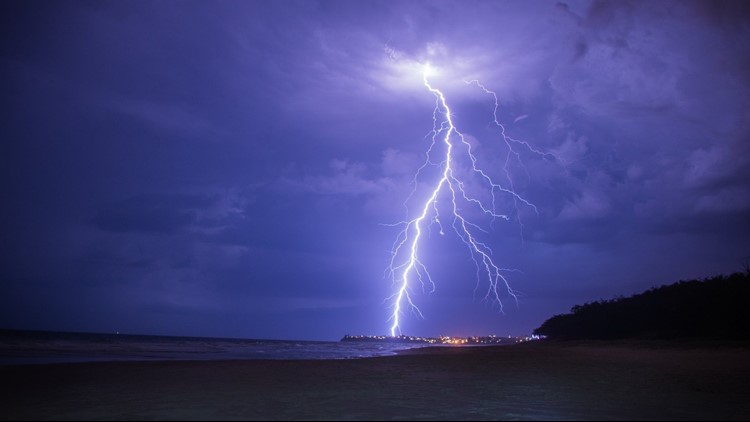TAMPA BAY, Fla. -- You know the unmistakable signs of lightning -- The eerie quiet before the bright flash, the flinching and waiting to hear the boom of thunder and sometimes the smell of chlorine or ozone.
What you may not know are the best ways to avoid being struck by one of these electrostatic discharges capable of containing up to one billion volts of electricity.
According to the National Lightning Safety Institute, it’s all about “anticipating a high-risk situation and moving to a low-risk location.”
The NLSI outlines a common plan for lightning safety:
-- If you can see it, flee it. If you can hear it, clear it.
-- Check in with the Weather Channel, your local TV news station or NOAA Weather Radio for storm updates
-- Move to a safe location: A large, permanent building or metal vehicle is best.
-- Unsafe places are near metal or water, under trees, on hills, and near electric equipment.
-- Reassessing the hazard: The NLSI says it’s usually safe after no thunder or lightning have been observed for 30 minutes.
Is my vehicle safe?
Usually, but don’t touch anything metallic inside of the car, including the steering wheel. The NLSI says ideally, you should pull over, put your hands on your lap and wait it out.
The NLSI explains the safety of a metal car during a lightning storm like this: At lightning’s higher frequencies, currents are carried mostly on the outside of conducting objects, a phenomenon called the “skin effect.” The same holds true for it striking metal vehicles.
However, small riding lawn mowers, golf carts and utility wagons are some examples of unsafe vehicles during a lightning storm.
Those fascinated by this "skin effect" electric phenomenon, check out this guide to Faraday Cages.
Do rubber tires provide safety from lightning?
The NLSI says not at all. Four or five inches of rubber is no insulation whatsoever from lightning that has traveled through the sky for miles.
Myth: Lightning never strikes twice.
The Empire State Building in New York City gets struck by lightning 22-25 times every year.
►Make it easy to keep up-to-date with more stories like this. Download the 10News app now.
Have a news tip? Email desk@wtsp.com, or visit our Facebook page or Twitter feed.



